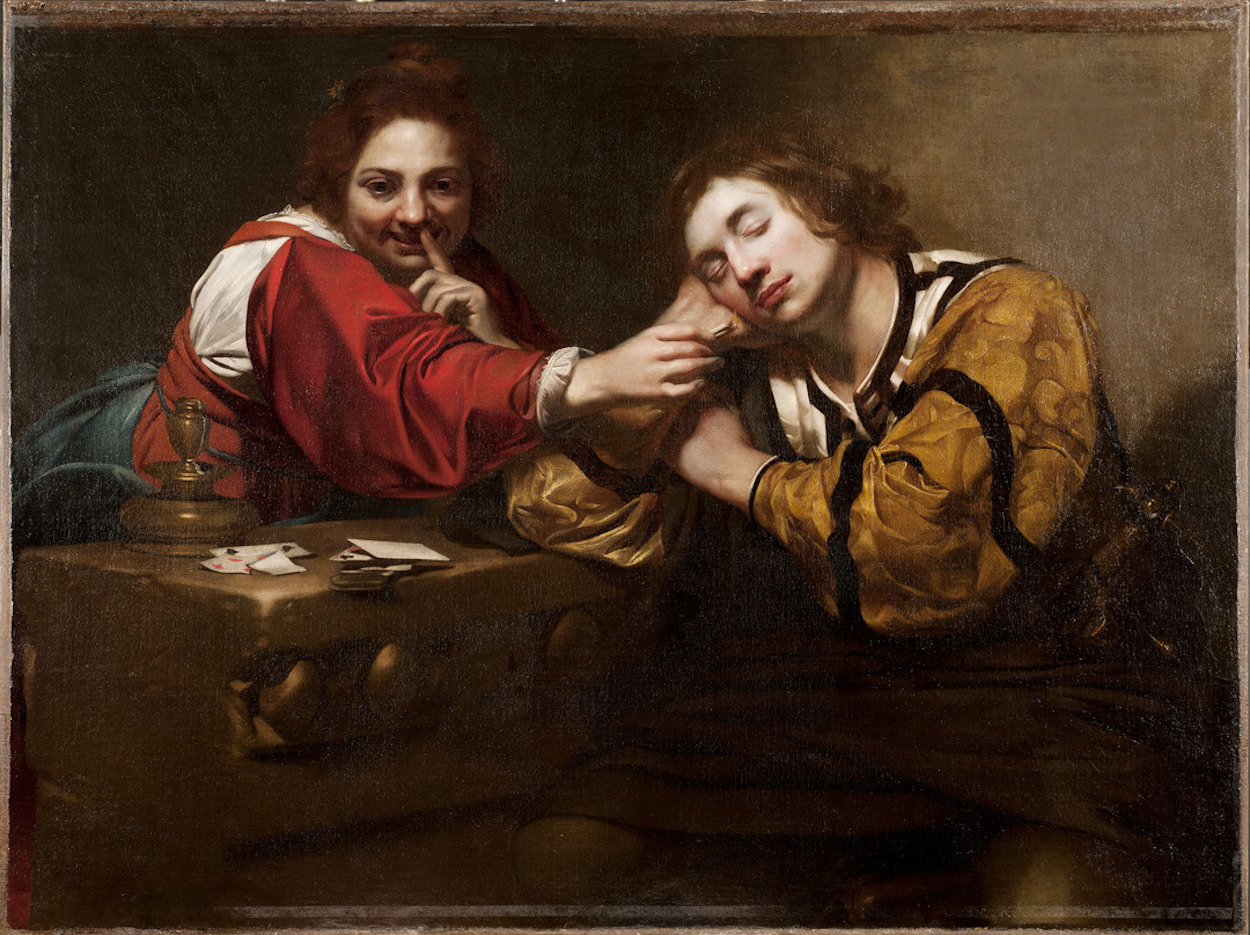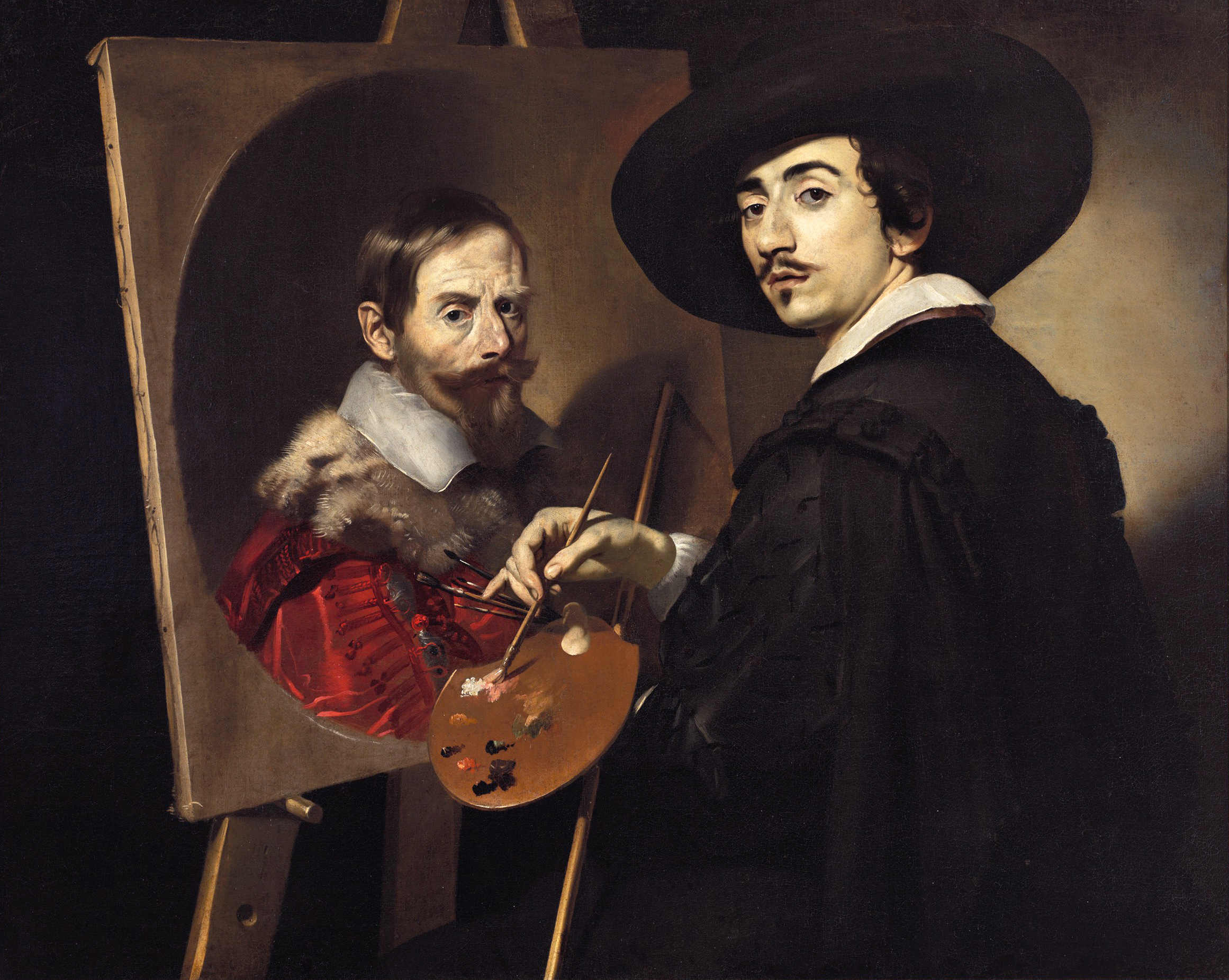A scene of comic ribaldry unfolds like a tableau vivant, with figures of great bodily and affective presence, painted from life and posed in the darkened space of the artist’s studio. A mischievous young prostitute prepares to play a prank on a soldier of fortune who, after a night of excess at a Roman tavern, has dozed off during a game of cards. The figures are momentarily caught in a bright shaft of light, the play of shadows heightening the sense of drama. A dumb show of gestures and glances, mirroring the exuberance of the comic actor’s repertoire, tells the story. The sleeper is about to learn a lesson—he will be burnt by the lit roll of tobacco wrapper held under his nose, an act fraught with eroticism. With a demonstrative gesture enjoining silence, the prankster invites the viewer’s complicity in mocking the folly of her unsuspecting victim.
Contemporary viewers would have recognized the characters as stock figures of popular theater and picaresque novels. Swaggering embodiments of excess, notorious for their foolishness, mercenaries were often portrayed in prodigal circumstances. Explicit action and characters exaggerated to the point of caricature were deemed appropriate for low-life subjects in a comic moralizing mode. Delighted by feats of illusion such as the torn playing card, or the molten wax on the candlestick, our eye is seduced by Régnier’s artifice in bringing the scene seemingly to life.
We present today's piece thanks to Nationalmuseum in Stockholm :)


 Nicolas Régnier
Nicolas Régnier